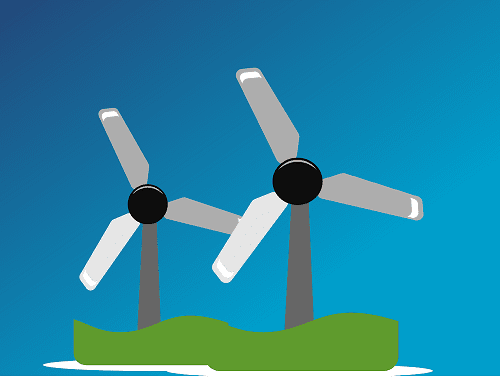Power Purchase Agreements (PPAs): how they turned into industrial’s favorites during this green Gold Rush?
Power Purchase Agreements, or PPAs, keep attracting corporate clients more than 10 years after their first appearance, driven by major industrial and technology leaders, particularly in the US. Enabling companies to meet their sustainable goals while mitigating their risks, PPAs are at the forefront of energy companies’ strategy, such as ENGIE and its Global Business Unit ENGIE - International Supply & Energy Management, who operates on wholesale energy markets. To explore PPAs’ development, Jérôme Malka, member of the executive committee, has answered our questions.
- Article
- 25/02/2021

First things first, what is a PPA and why are they key to answer to clients ‘needs?
A PPA is a contract by which an electricity consumer undertakes to directly acquire its electricity supply from a designated renewable production asset. It runs over several years, generally from 5 to 25 years.
The first driver pushing companies towards this kind of supply structure is the gradual and now almost generalized emergence of environmental objectives and corporate sustainability commitments. Companies are committing to reduce the amount of CO2 emitted into the atmosphere in connection with their operations, namely their electricity usage in the case of PPAs.
The second element is the continuous and extremely significant drop in the cost of green power technologies translating into a drop of the electricity price produced from wind or solar. It is very different from the traditional energy industry – oil or gas – where the cost to the end consumer ultimately has little to do with the production cost.
How can you explain this cost decrease regarding these energies and technologies?
In wind and solar technologies, there is a technological race very similar to what we can observe on other high-tech markets. Every year, efficiency and performance improve while costs decrease.
Over these last 15 years, the cost of these technologies has dropped dramatically. And governments around the world have played their part, supporting the emergence of these technologies through various support mechanisms, subsidies, guaranteed prices, feed-in tariffs, tax incentives, etc. This allowed subsequent economies of scale that brought lower costs and allowed renewable industries to become price competitive for consumers.

And what are the direct consequences for the market?
Facing this sharp reduction in these technology costs, a number of public authorities are gradually phasing out these support mechanisms. The fact remains that if we no longer look from the consumer perspective, but from the producers who develop such assets, investors need to have some level of visibility on future income, in order to secure financing. So the gradual disappearance of public support mechanisms which provided long-term visibility, allowing investment, is gradually being replaced by long-term purchase commitments made by companies, as part of their power supply for industrial and business activities.
What are ENGIE – International Supply & Energy Management’s different roles towards this industry?
We have a pretty central and “connecting” role. We are the connection between the renewable production industry and the consumers who wish to access renewable production.
- We act as purchaser of future renewable production , while renewable assets are developed. We then redistribute the volumes to consumers when needed.
- We also manage mismatches in volume. Typically, a renewable asset will generate quantities of electricity far greater than what a single customer needs. So our role is also to gather enough consumption volume to support and face the renewable production of a large production asset.
- And finally, we play an important role towards intermittency risks. Renewable assets, particularly solar and wind power, produce intermittently, and therefore cannot always meet the consumer needs at every point in time. It is our role at ENGIE – International Supply & Energy Management, by relying on both portfolio management techniques, market tools, and statistical forecasting methods, to enable this intermittent production to meet the specific demand profile for each client.
The energy market’s green transition has served companies’ ambitions of sustainability by giving them wider access to renewable power through PPAs. There is now a strong need to address the challenges of zero or low-carbon thermal production. Within ENGIE and its Global Business Unit ENGIE – International Supply & Energy Management, we are working with our clients to build the products and solutions for renewable and low-carbon thermal production, including hydrogen, biomass, biomethane… in a fast changing and fascinating technological landscape.
Discover our video:
MEDIA: